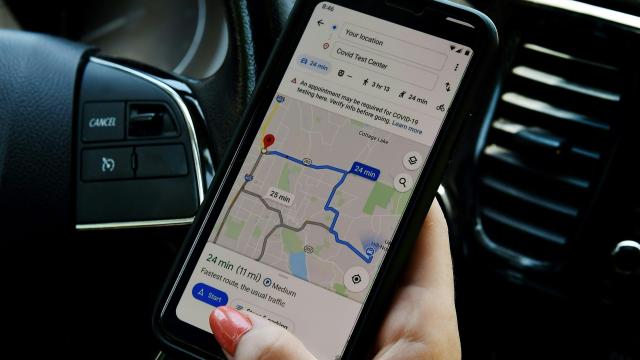It’s no secret that Google, as well as other big tech companies, know a lot about you. Probably a lot more than you think they do. And while in general that’s really creepy, sometimes it can briefly produce cool results, before going back to being creepy. Case in point: You can start off the year by stalking yourself with Google Maps.
As spotted by 9to5Google, Google Maps is currently rolling out its “2020 Timeline update,” an email which gives you a breakdown of the places you’ve been based on your location history. While this recap is also available monthly, the outlet notes, the 2020 update will show what your travel habits have looked like for all of last year.
Yes, 2020 was the year of the coronavirus pandemic, which seriously affected travel and movement in general, and Google acknowledges as much.
“COVID-19 changed the world’s travels in 2020, and how many places people were able to visit,” the email reads, per 9to5Google. “If you were able to travel this year, you can see some of the places you’ve been with the help of this automated Timeline email.”
Even though our travel lifestyles have been hampered by the pandemic, it can still be interesting to see where we did manage to go. According to 9to5Google, the update includes a map with the cities and places you’ve travelled to as well as a new section called “trends.” This section tells you what types of places you went to, such as places where you go to shop or eat. Google Maps’ Timeline also lets you know how many miles you walked and drove.
In order to use the feature, you apparently have to have Location History turned on in your Google account settings. (I don’t, which is why I foolishly looked for this recap for quite a while and did not get any results). Nonetheless, if you have other settings like Web & App Activity turned on, Google may still save your location data when you use its sites, apps, and services, even if you’ve paused Location History or deleted your location data, per the company’s support pages for the feature.
On its support page for the feature, Google says you can edit your Timeline or delete your location history, as well as its time ranges, at any time.
[referenced id=”1525899″ url=”https://gizmodo.com.au/2020/11/your-phones-navigation-app-is-probably-smarter-than-you-think/” thumb=”https://gizmodo.com.au/wp-content/uploads/2020/11/04/uz0pmp9uyzkidbmmvdvn-300×169.jpg” title=”Your Phone’s Navigation App is Probably Smarter Than You Think” excerpt=”You probably use your smartphone to get from point A to point B, but have you fully explored all the features and options available along the way? Google Maps, Apple Maps, and Waze all have navigation modes that are smarter and more versatile than you might have realised. From changing…”]
Thankfully, Google says your Timeline isn’t available for everyone to see. It’s private, and only you can see it on mobile and desktop.
All in all, kind of cool, but also kind of creepy. It’s up to you to decide how a feature like this makes you feel. Maybe you really like seeing your data broken out that way. But if you don’t, you can always turn it off.
